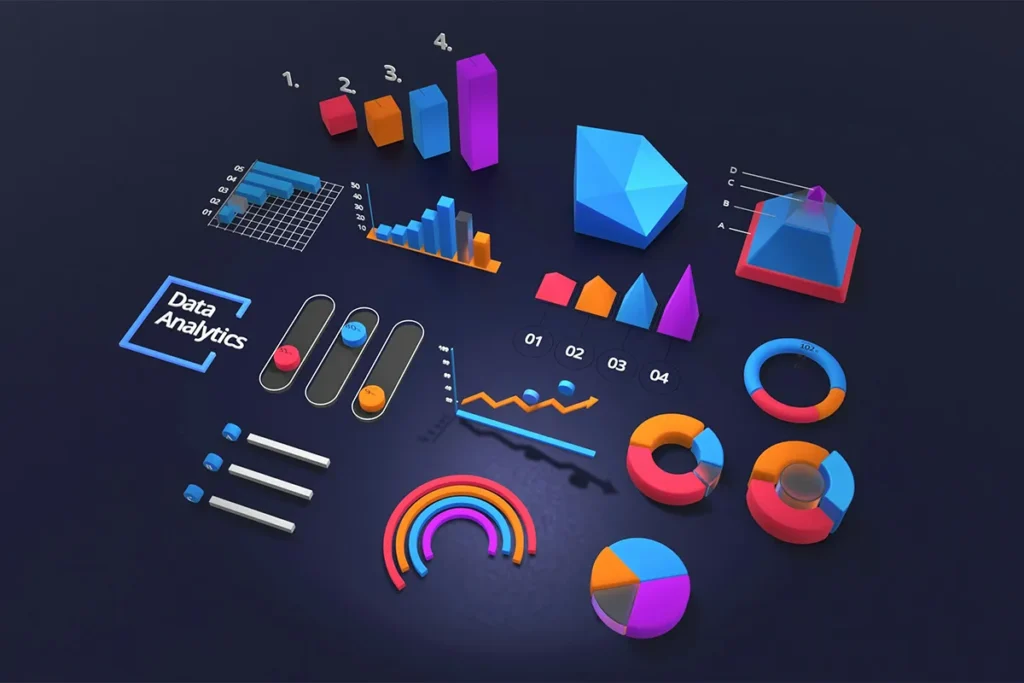The healthcare sector is very important when it comes to data presentation. There are various departments in which data is scattered, and it is difficult to have a well-integrated view. Making reports and reaching a healthy decision can be made simpler with these fabric healthcare data solutions for FHIR/OMOP. With clear and actionable access control, leaders can trust the numbers they see.
In this age of information, data is the key to the success of the healthcare business. Data privacy and its protection matter the most. In such scenarios, getting your hands on the best fabric healthcare data fabric solution boosts productivity, promotes simplicity, and makes the work faster. Smooth workflow and compiled data open up new opportunities and allow you to perform on a firm footing.
Top 10 Best Fabric Healthcare Data Solutions Tools:
These tools help connect EHR, claims, labs, and imaging into one governed layer. They support FHIR and make OMOP mapping smoother for analytics and AI. Read on to choose the right option for your team and timeline. If you are a data enthusiast, you might be interested in learning about data fabric vs data hub to reach the best decision.
1. Smile Digital Health
Smile Digital Health is known for a strong FHIR base. It follows standards and keeps things clear and fast. With careful models and helpful APIs, teams can connect clinical systems without heavy code. The platform cuts data friction and shortens the time from intake to insight. It often serves as a safe center that other apps can plug into with ease.
When your program needs a steady FHIR data integration platform, Smile is a good choice. It supports clinical exchange, patient access, and payer and provider work. It also works well with warehouses and lakehouses where OMOP mapping happens. For teams that want stable FHIR speed and a clean path for governance, this option is a steady pick.
Pros:
- Standards-based FHIR-first platform design.
- Full FHIR server features.
- Flexible cloud or managed.
- Connects easily with analytics.
Cons:
- OMOP requires extra ETL.
- Java and HAPI skills required.
- Prescriptive module interactions constrain.
- Advanced analytics rely externally.

2. Innovaccer
Innovaccer takes a platform path to join clinical, operational, and financial data. It focuses on data quality, identity matching, and cross-team analytics. The design aims to make hard work feel simple, so care teams see one clear view. Helpful metadata and a guided model help new users move faster and make fewer mistakes.
If your group seeks a healthcare data interoperability fabric that supports population health and value-based care, Innovaccer fits well. It also brings curated measures, care gaps, and performance dashboards into one place. That makes it easier to choose next steps, show results, and keep leaders aligned during long programs.
Pros:
- FHIR-enabled unified data platform.
- The Unified Data Model standardizes.
- Prebuilt apps for population health.
- Strong market recognition and awards.
Cons:
- Managed cloud emphasis limits self-hosting.
- Mapping UDM to OMOP is required.
- US-centric standards need localization.
- Less fit beyond the healthcare industry.
3. InterSystems
InterSystems has deep roots in healthcare links. Its technology supports events, routing, and strong transactions. Teams use it to move data across EHRs, labs, and registries without losing speed or reliability. The platform is often used for projects that need low delay, high uptime, and steady flow.
When pipelines must support real-time HL7 FHIR ingestion, InterSystems is a natural match. It can route, change, and govern messages while feeding downstream analytics layers. It also supports modern APIs, so you can expose clean services to partner apps. This mix of classic links and modern FHIR helps groups connect old systems with new ones.
Pros:
- High-performance health data platform.
- HealthShare for large interoperability.
- Proven at mission-critical scale.
- First-party FHIR-to-OMOP pipeline.
Cons:
- Steep IRIS learning curve.
- Cost and resource-intensive.
- Vendor-specific stack and terminology.
- FHIR version migration planning is needed.
4. MedeAnalytics
MedeAnalytics focuses on provider and payer analytics that drive action. It helps users track revenue, performance, and quality in a clear way. The platform answers common questions fast, then allows deeper dives when needed. That balance works well for leaders who want quick views and reliable drill-downs across many teams.
For teams building an OMOP clinical analytics pipeline, MedeAnalytics offers a practical path. It connects to source systems, aligns terms, and maps to standard models for repeatable reporting. That means analysts can compare like with like, run cohorts across time, and reduce noise that slows progress. Simple views help more people make better choices.
Pros:
- Turnkey curated health data fabric.
- Automated narratives and predictive search.
- Runs on Snowflake AI Cloud.
- Supports external BI integration.
Cons:
- Not a native FHIR server.
- Focused on analytics use cases.
- Some UX and speed concerns.
- Less control than DIY.
5. Alivia Analytics
Alivia Analytics is built for payer integrity. It fights fraud, waste, and abuse by weaving claims, provider, and member data together. Clear lineage and audit trails show who touched what and when. That level of detail builds trust with internal reviewers and with outside auditors who need proof.
Programs that need a governed health data architecture can lean on Alivia. It helps set common rules, lock down sensitive fields, and keep steps repeatable. The result is safer sharing and faster checks, with better signals and fewer false positives across teams. People can move quickly and still stay safe.
Pros:
- Pre-pay risk scoring workflows.
- Unified FWA integrity platform.
- Behavioral modeling beyond rules.
- Scales across plan sizes.
Cons:
- Claims focus, limited clinical.
- Requires other platforms for OMOP.
- Demands strong governance and explainability.
- Benefits depend on claim quality.

6. Qlik Talend Data Fabric
Qlik Talend Data Fabric brings data integration, quality, and governance into one suite. It supports batch and streaming and gives stewards tools. Because it blends ETL, ELT, and metadata, it can cut the number of moving parts in your stack. That can lower maintenance and help teams ship changes sooner.
Hospitals and payers that need scalable healthcare data virtualization will find strong options here. You can create unified views across EHRs, claims stores, and research lakes without copying data each time. That flexibility eases FHIR to OMOP journeys and lets analysts explore safely while governance stays intact.
Pros:
- Integration, quality, governance suite.
- Broad connectivity and data quality.
- FHIR mapping support in mapper.
- Large ecosystem and community.
Cons:
- Learning curve and pricing concerns.
- Scalability gaps versus peers.
- Not a turnkey FHIR repository.
- Multiple components for full fabric.
7. IBM Cloud Pak for Data
IBM Cloud Pak for Data puts governance first. It offers catalogs, policies, lineage, and role-based controls that meet needs. It also supports machine learning and AI services that run on governed data. That reduces friction when you move from raw data to models that help teams in their daily work.
If your roadmap includes imaging and clinical data together, IBM can support a DICOM to cloud imaging fabric approach. It helps teams link imaging metadata with clinical records and then route the right content to analytics and AI. With strong controls and audit features, it supports compliance while keeping data useful for care and research.
Pros:
- Strong governance and cataloging.
- Virtualize distributed data sources.
- Managed service or software.
- Recognized data fabric foundation.
Cons:
- OpenShift adds operational complexity.
- Heavy setup and sizing effort.
- Complexity and potential cost escalations.
- Not a native FHIR CDR.
8. Denodo
Denodo is known for logical data fabric computing and integration. It builds virtual views on top of your sources, which can reduce the need for copies. That approach is helpful when many teams want steady definitions but cannot pause systems. You define once, then reuse across analytics, apps, and APIs again.
Groups that want a vendor-neutral healthcare data layer will value Denodo. It creates governed access to many systems without forcing one storage choice. That means you can grow your warehouses and lakes over time, keep services online, and still provide a steady view to users.
Pros:
- Logical data fabric via virtualization.
- Strong security, lineage, governance.
- Works across clouds and on-prem.
- Mature caching and optimization features.
Cons:
- Not ideal for heavy analytics.
- Upfront cost and skills investment.
- Poor modeling hurts performance.
- FHIR/OMOP accelerators are not native.
9. SAP Datasphere
SAP Datasphere links business meaning with technical data. It aims to keep the context from the source to the report so people can trust the results. With strong modeling and clear lineage, it supports careful change control and safe teamwork.
If your group seeks a patient 360 longitudinal record, Datasphere is a strong candidate. It can combine encounters, claims, medications, and social risk into one governed layer. From there, teams can map to OMOP, fill dashboards, and track progress over time. Clear context helps leaders decide faster and with confidence.
Pros:
- Unified experience across integration.
- Preserves business semantics and lineage.
- Clear framework for modeling.
- FHIR services are available on BTP.
Cons:
- Functionality gaps and scalability challenges.
- Cost concerns in reviews.
- Best fit in SAP landscapes.
- OMOP requires additional modeling.

10. Stardog
Stardog brings a knowledge graph view to the data fabric use cases. It focuses on meaning and links, not just tables and files. That makes it easier to connect clinical ideas, terminologies, and patient journeys. With this structure, you can ask richer questions and get answers that match real-world stories.
Compliance teams and data stewards will value HIPAA-ready data governance workflows that tie policy to meaning. Stardog helps link rules to data, people, and use cases. As a result, you can explain why an access decision was made and prove it with clear paths. This clarity supports audits, lowers risk, and builds trust in analytics and AI.
Pros:
- Virtual Graphs connect sources.
- SPARQL reasoning enables complex questions.
- Helps with entity resolution.
- Cloud or self-managed deployments.
Cons:
- Semantic skills are required for teams.
- Front-loaded modeling effort needed.
- Performance depends on careful design.
- OMOP alignment needs custom modeling.
Comparison Table: Fabric HealthCare Data Solutions
| Platform | What it is (simple) | FHIR-ready | OMOP-ready | Best for |
|---|---|---|---|---|
| Smile Digital Health | FHIR-first health data platform | Yes (native) | Needs mapping | Data sharing |
| Innovaccer | Healthcare data platform with apps | Yes | Needs mapping | Population health |
| InterSystems | High-speed health data hub | Yes | Built-in option | Real-time links |
| MedeAnalytics | Analytics suite for providers/payers | Integrates | Via warehouse | Performance analytics |
| Alivia Analytics | Payment integrity and FWA | Not core | External | Pre-pay integrity |
| Qlik Talend Data Fabric | Data integration and quality tools | Mapper ready | DIY mapping | Building pipelines |
| IBM Cloud Pak for Data | Enterprise data fabric platform | Adapters | DIY mapping | Governed hybrid data |
| Denodo | Virtualize and join data | Views model | Map later | 360 views |
| SAP Datasphere | Business data fabric for SAP | SAP service | Modeling | SAP-centric analytics |
| Stardog | Graph-based data fabric | Model-based | Custom mapping | Linked data questions |
A Private Desktop Data Hub for Care
DejaOffice gives teams a private, desktop-first space for contacts, calendars, tasks, and notes while keeping data under local control. When paired with a health data fabric tool, it works as a governed edge hub that captures field updates, syncs with staff devices, and exports standard files for downstream steps.
- Local-first control: Keep sensitive information on Windows desktops with LAN or USB sync, which reduces exposure to outside clouds and aligns with strict governance models.
- Granular roles and field privacy: Define who can view, edit, or export specific fields so frontline work follows central policies and limits oversharing.
- Private sync options: Choose Wi-Fi, LAN, or direct cable sync to move data between desktop and mobile without third-party relays.
- Audit-ready activity trails: Maintain timestamps and change logs that support reviews and incident response work.
- Custom fields and taxonomies: Create domain labels and picklists that map cleanly to FHIR resources or OMOP concepts through CSV or JSON.
- Automation and connectors: Use Outlook, Google, and CompanionLink bridges, plus REST-friendly exports, to feed staging zones for ETL.
- Targeted reporting and exports: Generate minimal, purpose-built exports so pipelines get only the columns they need for safe and efficient processing.
Used in this pattern, DejaOffice supports the central fabric rather than replacing it. It provides a secure, governed edge where staff can work well, while your FHIR and OMOP pipelines keep clean, auditable inputs.
Conclusion
A strong data fabric product will not fix every problem, but it sets a clean base. It reduces silos, lifts quality, and keeps the right controls in place. Your teams can find, share, and use data without breaking rules. That is the base that modern healthcare programs need.
Start by listing your must-haves: FHIR support level, OMOP depth, governance needs, imaging scope, latency, and identity resolution. Then shortlist two or three platforms from this guide and run small, real tests. Small wins build momentum. When you choose a tool that fits your work and culture, the fabric becomes a daily habit, not a special project.
